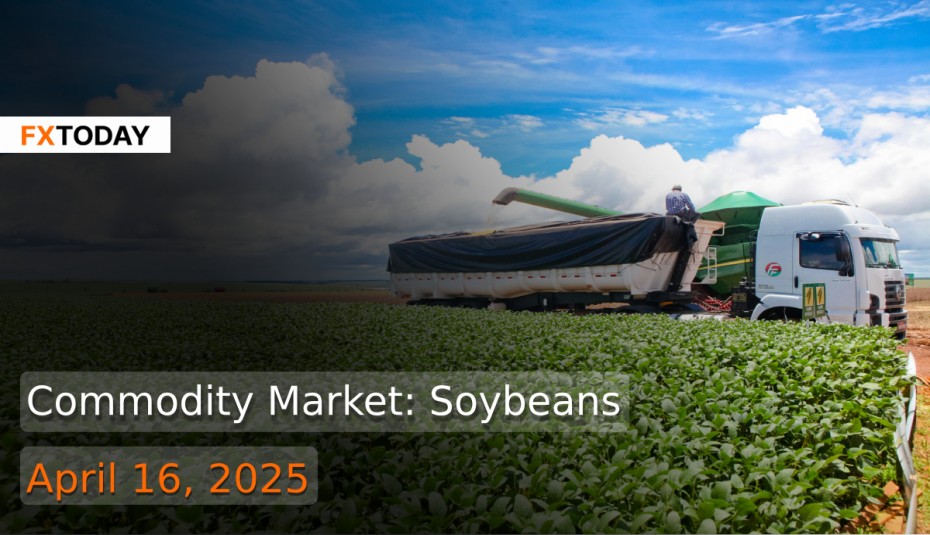Global Soy Market Volatile as U.S.-China Trade Tensions Boost Brazil's Role
Soybean markets remain mixed as U.S. planting progresses, Brazil nears the end of its harvest, and Argentina continues harvesting. Despite a lack of visible progress in U.S. trade negotiations, behind-the-scenes talks with key partners persist—though China remains a major holdout. Meanwhile, all eyes are on upcoming reports: the USDA’s supply-demand update on May 12 and Brazil’s CONAB outlook on May 15. Product-wise, soybean meal prices dipped while soybean oil rose due to shifts in product spreads. The USDA also projected Indonesia’s 2025/26 palm oil production to increase 3% to 47 million tons, mainly due to improved weather and broad-based demand growth.
In the U.S., soybean use for 2024/25 is expected to rise with higher imports and crush volumes, though ending stocks are projected to decline by 5 million bushels to 375 million. Soybean oil exports are up based on commitments, while biodiesel-related use is down early in the season but expected to strengthen later due to new biofuel tariffs. The average U.S. soybean price remains at $9.95 per bushel, while meal prices are lowered and oil prices rise slightly.
Globally, soybean beginning stocks have been revised upward, mainly from Brazil, although total 2024/25 production is down slightly due to lower yields in Bolivia, partially offset by gains elsewhere. A global rise in soybean crush and meal demand is supported by abundant supply and lower costs, even as vegetable oil output dips due to weaker palm oil production from Indonesia, Malaysia, and Thailand. Soybean exports are slightly up, and global ending stocks have been revised upward to 122.5 million tons.
Amid these developments, Brazil and China are holding high-level talks in Brasília to expand agricultural trade, particularly soybeans and beef, as China seeks alternatives to U.S. imports amid escalating trade tensions. Discussions include aligning with China’s 10-year food security plan and increasing Brazil’s role in value-added grain exports and technology sharing. Brazilian officials are keen to position the country as a stable, long-term supplier, emphasizing infrastructure needs and opportunities for Chinese investment in storage and logistics.
However, the trade war is tightening margins for Brazilian soybean processors. While exports to China surge and port premiums rise—some shipments fetching $0.65 per bushel above base prices—processors are grappling with higher acquisition costs and a sharp drop in domestic biodiesel prices. The Brazilian Vegetable Oil Industry Association (ABIOVE) notes that 30–40% of the crop remains unpurchased, leaving processors vulnerable to escalating prices. Though crush volumes are expected to hold steady due to strong domestic demand for oil and meal, profitability is under pressure.
Over the course of several days, Chicago soybean futures experienced a notable downturn, slipping from a seven-week high due to weak Chinese demand, heightened trade tensions, and strong South American supply. Initially, soybeans showed mixed performance on Monday, with new crop prices edging higher while nearby contracts dipped. By Tuesday and Wednesday, prices consistently declined, driven by China’s reduced imports amid an escalating trade war and a bumper Brazilian harvest, which has led buyers to shift away from U.S. products.
Export activity reflected this trend, with U.S. weekly soybean shipments falling 32.9% from the previous week, although still 22.1% higher than the same period last year. Despite ongoing tariff disputes, China remained a leading importer, though overall imports dropped sharply in March, down 36.8% year-over-year. First-quarter Chinese imports also declined by 7.9%.
The NOPA crush report revealed a U.S. March soybean crush of 194.55 million bushels—up from February but slightly below last year’s level. Soybean oil stocks also declined nearly 19% year-over-year. Market speculation based on the Commitment of Traders report showed speculators increasing long positions, while commercials reduced their net short positions.
The broader agricultural market was influenced by a weakening U.S. dollar, which initially provided some support by making U.S. goods more attractive globally. However, this was offset by global competition and the impact of U.S. tariffs, which discouraged foreign purchases. As Commerzbank noted, U.S. soybeans have become prohibitively expensive for Chinese buyers, who are increasingly turning to Brazil to fulfill import needs.
Looking ahead, soybean futures are likely to remain under moderate downward pressure in the near term, reflecting a confluence of bearish global fundamentals and geopolitical tensions. Near-term volatility is expected around key data releases from USDA (May 12) and CONAB (May 15), which could influence supply-demand outlooks. However, unless demand from China rebounds significantly or weather disrupts key producing regions, soybean futures may face difficulty sustaining gains beyond current levels and could test support in the 1,000–1,015 range.
Data for Technical Analysis (1D) CFD US Soybeans Futures - May 25 (ZSK5)
Resistance : 1039.68, 1042.16, 1046.17
Support : 1031.66, 1029.18, 1025.17
1D Outlook
Source: TradingView
Buy/Long 1 If the support at the price range 1025.66 - 1031.66 is touched, but the support at 1031.66 cannot be broken, the TP may be set around 1040.59 and the SL around 1022.66, or up to the risk appetite.
Buy/Long 2 If the resistance can be broken at the price range of 1039.68 – 1045.68, TP may be set around 1052.00 and SL around 1027.00, or up to the risk appetite.
Sell/Short 1 If the resistance at the price range 1039.68 – 1045.68 is touched, but the resistance 1039.68 cannot be broken, the TP may be set around 1030.09 and the SL around 1036.68, or up to the risk appetite.
Sell/Short 2 If the support can be broken at the price range of 1025.66 - 1031.66, TP may be set around 1015.00 and SL around 1043.00, or up to the risk appetite.
Pivot Points Apr 16, 2025 06:03AM GMT
|
Name
|
S3
|
S2
|
S1
|
Pivot Points
|
R1
|
R2
|
R3
|
|---|---|---|---|---|---|---|---|
| Classic | 1019.59 | 1025.17 | 1030.09 | 1035.67 | 1040.59 | 1046.17 | 1051.09 |
| Fibonacci | 1025.17 | 1029.18 | 1031.66 | 1035.67 | 1039.68 | 1042.16 | 1046.17 |
| Camarilla | 1032.11 | 1033.08 | 1034.04 | 1035.67 | 1035.96 | 1036.92 | 1037.89 |
| Woodie's | 1019.25 | 1025 | 1029.75 | 1035.5 | 1040.25 | 1046 | 1050.75 |
| DeMark's | - | - | 1027.62 | 1034.44 | 1038.12 | - | - |
Sources: SCMP, Valor International
















